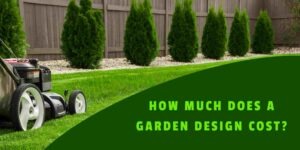Creating a vegetable garden is one of the most satisfying ways to enjoy fresh, organic produce while connecting with nature. Whether you have a small backyard, a balcony, or an open lawn, there are plenty of smart, creative, and space-saving vegetable garden construction ideas that can help you grow your own food successfully.
In this article, we’ll explore practical construction ideas, materials, and layout strategies that make building a vegetable garden both affordable and rewarding.
1. Raised Bed Vegetable Garden
Raised beds are one of the most popular and effective ways to grow vegetables.
Benefits:
Better soil control and drainage
Less bending and easier maintenance
Fewer weeds and pests
Construction Tips:
Use untreated wood, bricks, or concrete blocks
Standard size: 4 ft wide by 8 ft long and 12–18 inches deep
Line the bottom with landscape fabric or cardboard
Fill with quality garden soil and compost
Ideal For: Carrots, lettuce, spinach, peppers, radishes, and more
2. Vertical Vegetable Garden
When horizontal space is limited, go vertical.
Ideas:
Use hanging pots or grow bags on walls or fences
Build wooden vertical frames with planter boxes
Use old ladders or trellises for climbing vegetables like beans and cucumbers
Best Vegetables for Vertical Gardens: Tomatoes, peas, cucumbers, beans, spinach
Tip: Add a drip irrigation system to keep all levels watered efficiently.
3. Container Vegetable Garden
Perfect for balconies, patios, or renters.
Construction Ideas:
Use large pots, barrels, or recycled buckets
Ensure containers have drainage holes
Elevate with plant stands or wooden crates
Fill with potting mix and compost
Great for: Tomatoes, basil, chillies, lettuce, and herbs
Bonus Tip: Use wheeled trays to move containers easily in/out of the sun.
4. In-Ground Vegetable Garden Plots
If you have space and soil quality is good, direct planting works well.
Setup Steps:
Choose a sunny, level area
Remove grass and weeds
Till the soil and mix in compost
Divide into rows or mounds with pathways in between
Suitable For: Potatoes, onions, squash, corn, beans
Use mulch between rows to reduce weeds and retain moisture.
5. Keyhole Garden Construction
Keyhole gardens are circular raised beds with a compost bin at the center.
Benefits:
Water-efficient and self-fertilizing
Great for dry climates
Easy access to all sides
Construction Details:
Shape: Circular, about 6 feet wide
Materials: Stone, bricks, or wood
Central compost bin distributes nutrients outward
Ideal for permaculture-style gardening.
6. Pallet Vegetable Garden
Repurpose wooden pallets for simple, vertical or ground-level gardens.
Ideas:
Stand the pallet upright and insert soil between slats
Lay it flat and plant in each row
Paint and label for a decorative touch
Good for: Leafy greens, herbs, strawberries
Make sure pallets are heat-treated (HT) and not chemically treated.
7. Greenhouse Vegetable Garden
Extend your growing season and protect your crops.
Construction Tips:
Use a PVC or metal frame
Cover with greenhouse plastic or polycarbonate panels
Install vents or windows for airflow
Include raised beds or ground plots inside
Perfect For: Tomatoes, peppers, lettuce, cucumbers year-round
A small DIY greenhouse can be made using bamboo and polythene sheets.
8. Hydroponic Vegetable Garden
For soil-less and indoor gardening, hydroponics is an advanced but effective option.
Construction Basics:
Grow trays or vertical towers
Nutrient-rich water reservoir and pump
LED grow lights (if indoors)
Net pots and inert growing medium like coco coir or clay pellets
Best for: Lettuce, herbs, cherry tomatoes, kale
Great for urban homes or rooftops with limited soil.
9. Balcony or Rooftop Vegetable Garden
Maximize underutilized spaces with lightweight, mobile construction options.
Design Ideas:
Use rail planters, grow bags, or vertical towers
Install wooden decking with pot holders
Use trellises along walls for climbing vegetables
Good for: Tomatoes, peppers, cucumbers, beans, herbs
Ensure proper drainage and reinforce structures for weight load.
10. Spiral Garden Beds
A spiral garden adds a decorative and functional shape to your space.
Construction:
Form a spiral with rocks, bricks, or wood
Build upwards to create planting tiers
Plant herbs and veggies that need different moisture levels
Bottom = moisture-loving plants, Top = drought-tolerant herbs
Adds visual interest and maximizes growing surface.
11. Tire Garden for Vegetables
Old tires can be stacked, painted, and reused for growing vegetables.
Construction:
Clean and paint old tires
Stack them for depth
Fill with compost-rich soil
Plant directly inside
Use for: Potatoes, beets, onions, leafy greens
Stacking 2–3 tires helps create deeper beds for root vegetables.
12. Trellis and Archway Gardens
Make your vegetable garden vertical and decorative.
Construction:
Install wooden or metal archways
Use string or netting as support
Grow climbers like beans, cucumbers, gourds, or peas
Provides shade, beauty, and higher yields in smaller spaces.
13. DIY Green Fence with Edible Plants
Combine fencing and food growing.
Setup:
Build a wire mesh or bamboo fence
Train edible climbers like bitter gourd, ridge gourd, or tomatoes
Plant at the base of your fence
Adds privacy, shade, and harvest potential.
14. Cold Frame Garden Boxes
Useful for starting seedlings or growing in colder seasons.
Construction:
Build a wooden box with a transparent top
Use an old window or clear plastic lid
Keep it south-facing for maximum sunlight
Acts like a mini greenhouse for early planting.
15. Recycled Furniture Garden
Turn old furniture into unique vegetable beds.
Ideas:
Use drawers as mini raised beds
Plant in old bathtubs or sinks
Convert broken shelves into tiered gardens
Creative, eco-friendly, and cheap to build!
16. Trench Garden Construction
In dry regions, trench gardens conserve water.
How to build:
Dig a shallow trench
Layer compost, organic matter, and soil
Plant vegetables inside
Retains moisture and nutrients longer—great for arid climates.
17. Companion Planting Zones
Build garden areas based on plant compatibility.
Layout Ideas:
Tomatoes + basil + marigolds
Corn + beans + squash (Three Sisters)
Carrots + onions + rosemary
Build boxed zones or plots specifically for companion pairs.
18. Wooden Crate Garden Boxes
Use fruit crates for simple, modular garden beds.
Advantages:
Stackable and movable
Rustic look
Budget-friendly
Good for patios, porches, or windowsills.
19. Hanging Vegetable Gardens
Save floor space with hanging gardens.
Setup:
Hang grow bags, plastic bottles, or fabric planters
Use balcony railings or hanging rods
Install above ground level to avoid pests
Good for herbs, lettuce, and small peppers.
20. Brick Border Vegetable Beds
Use bricks to frame and elevate vegetable beds.
Construction:
Lay bricks in a square or rectangular shape
Set into mortar or dry stack
Fill with soil and compost
Adds a polished look and keeps garden neat.
Conclusion: Build a Garden that Grows with You
No matter your space, climate, or experience level, these vegetable garden construction ideas will help you design a productive and beautiful growing space. From raised beds and containers to vertical gardens and greenhouses, you can construct a garden that fits your lifestyle and maximizes your harvest.
With just a little creativity, planning, and effort, your home can become a fresh food paradise—right in your backyard, balcony, or rooftop.
Read More:






